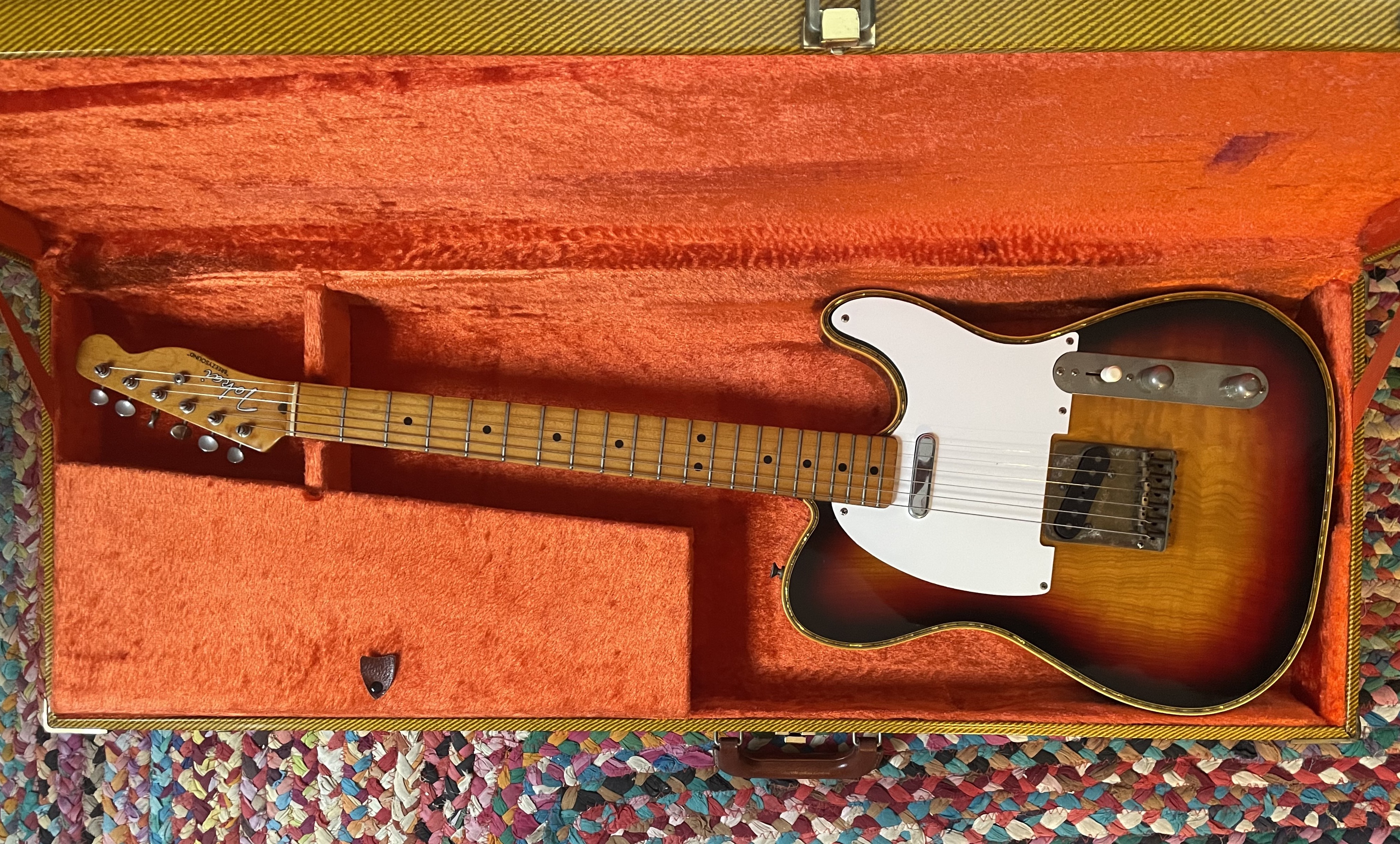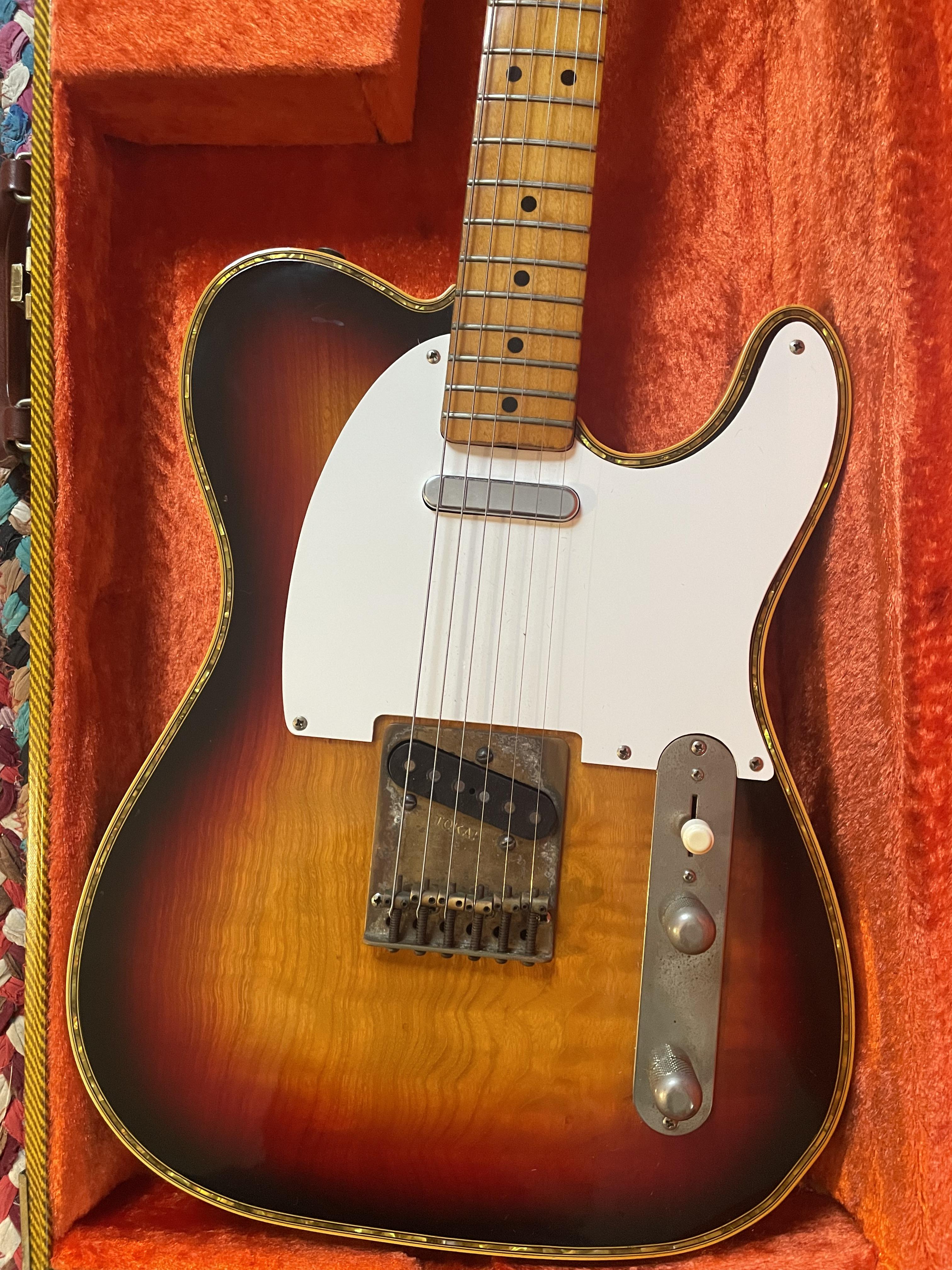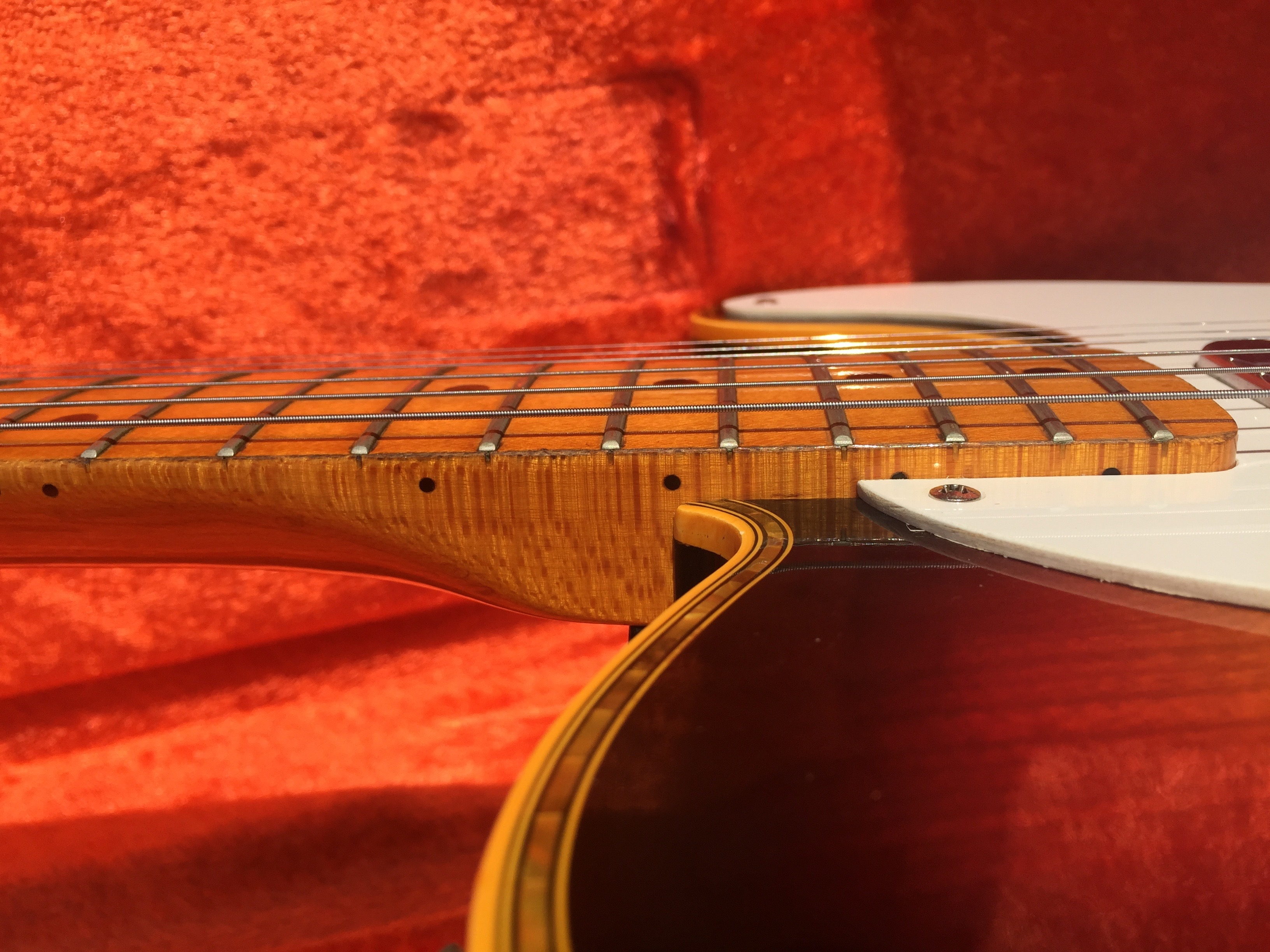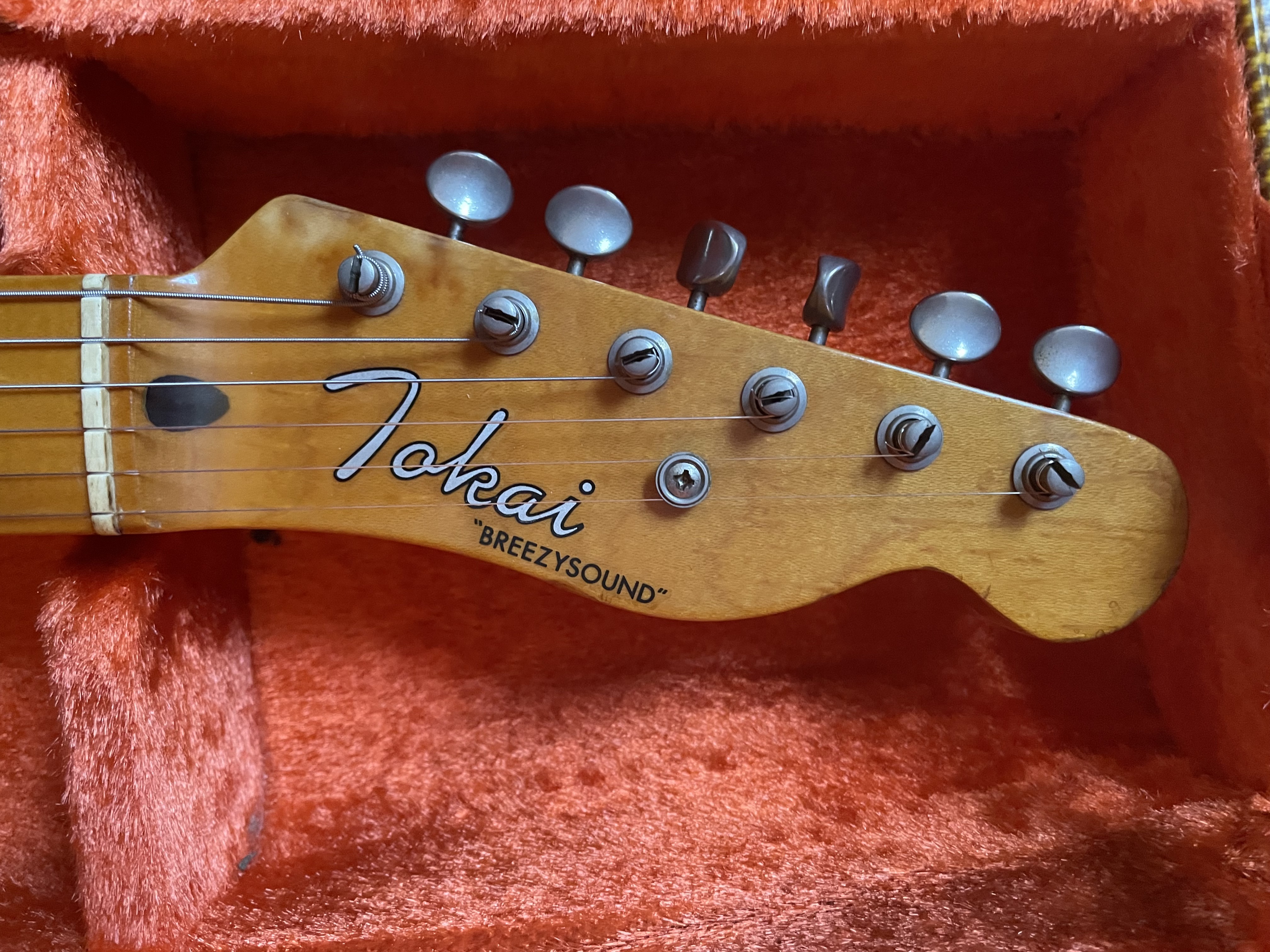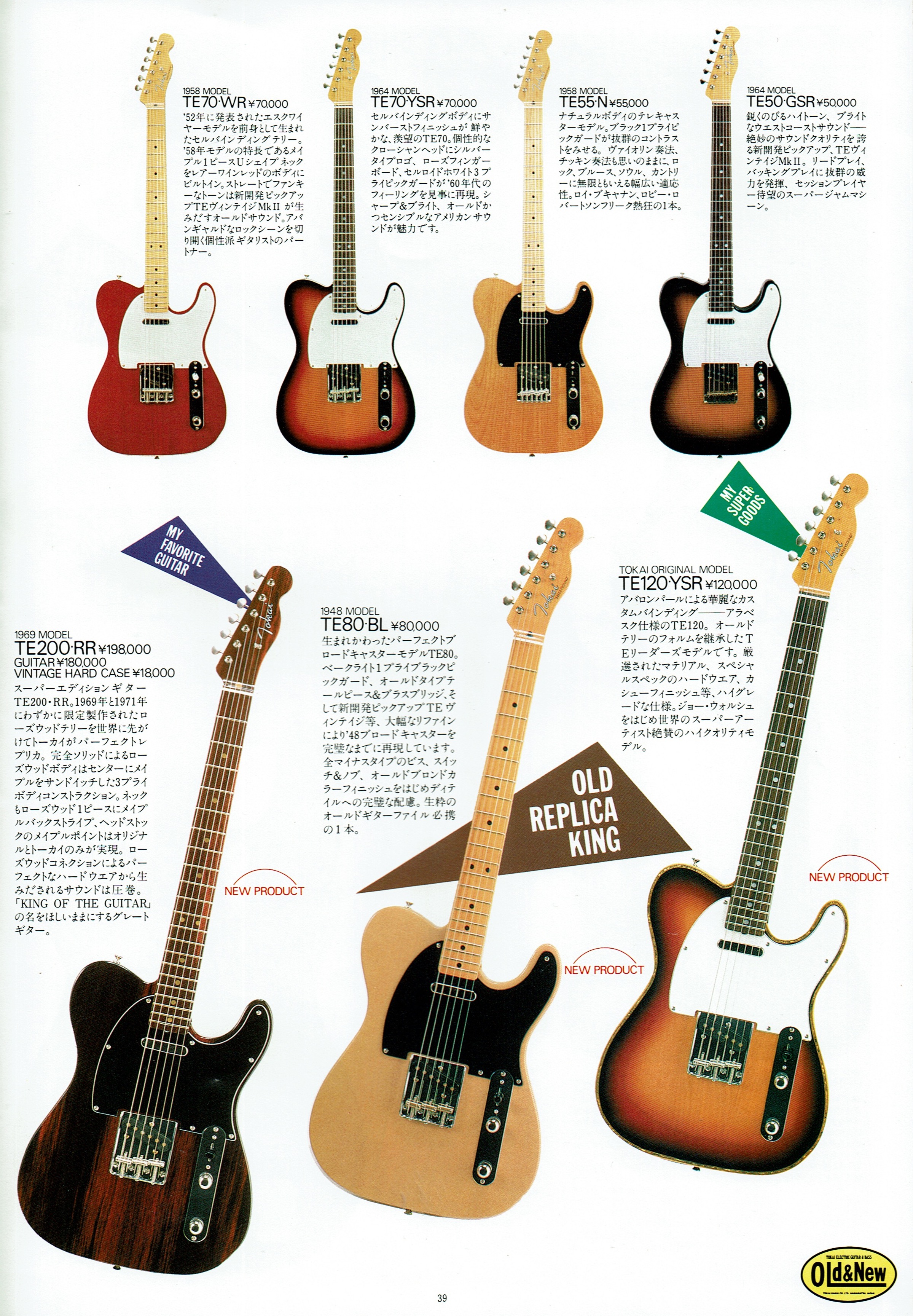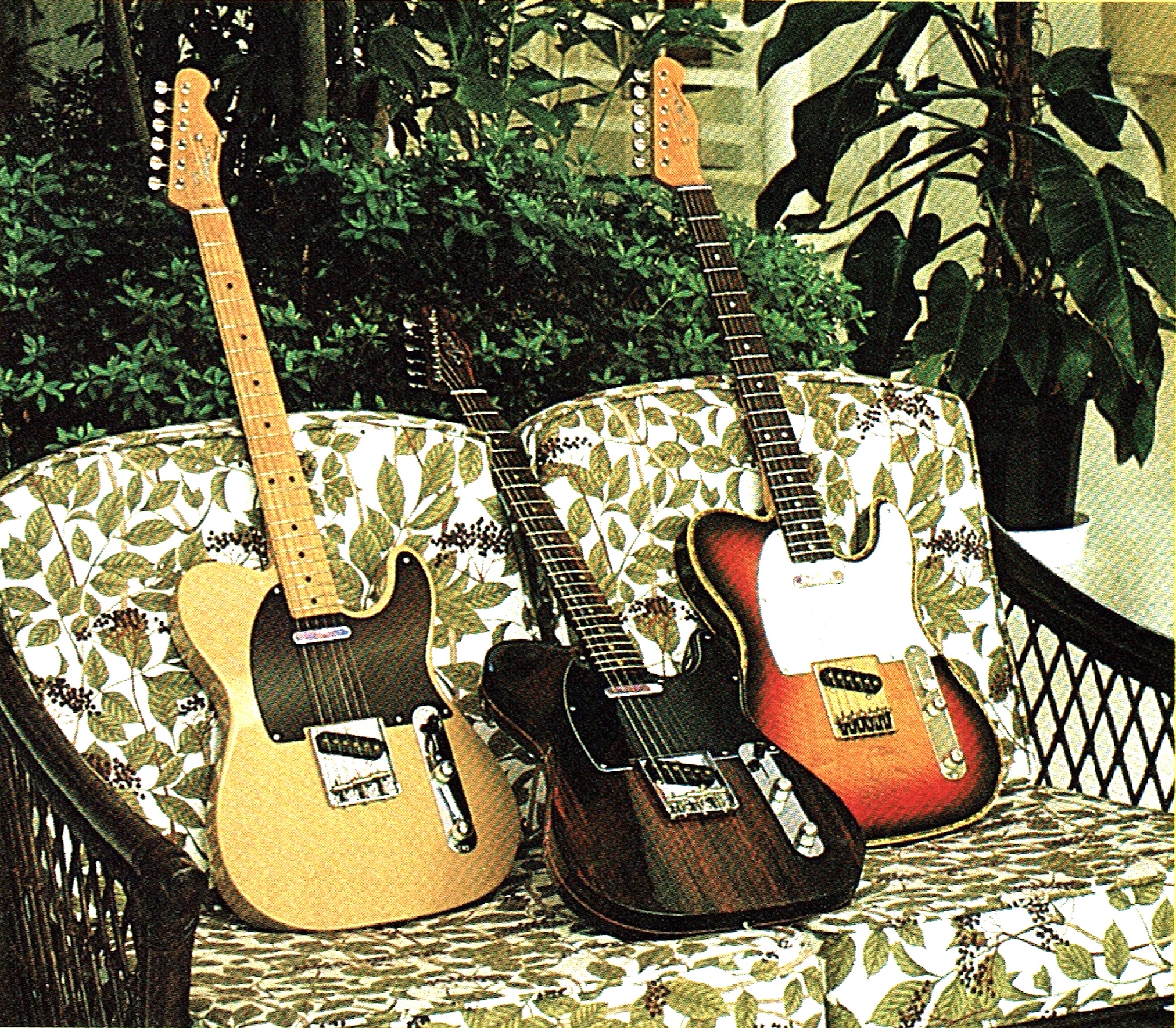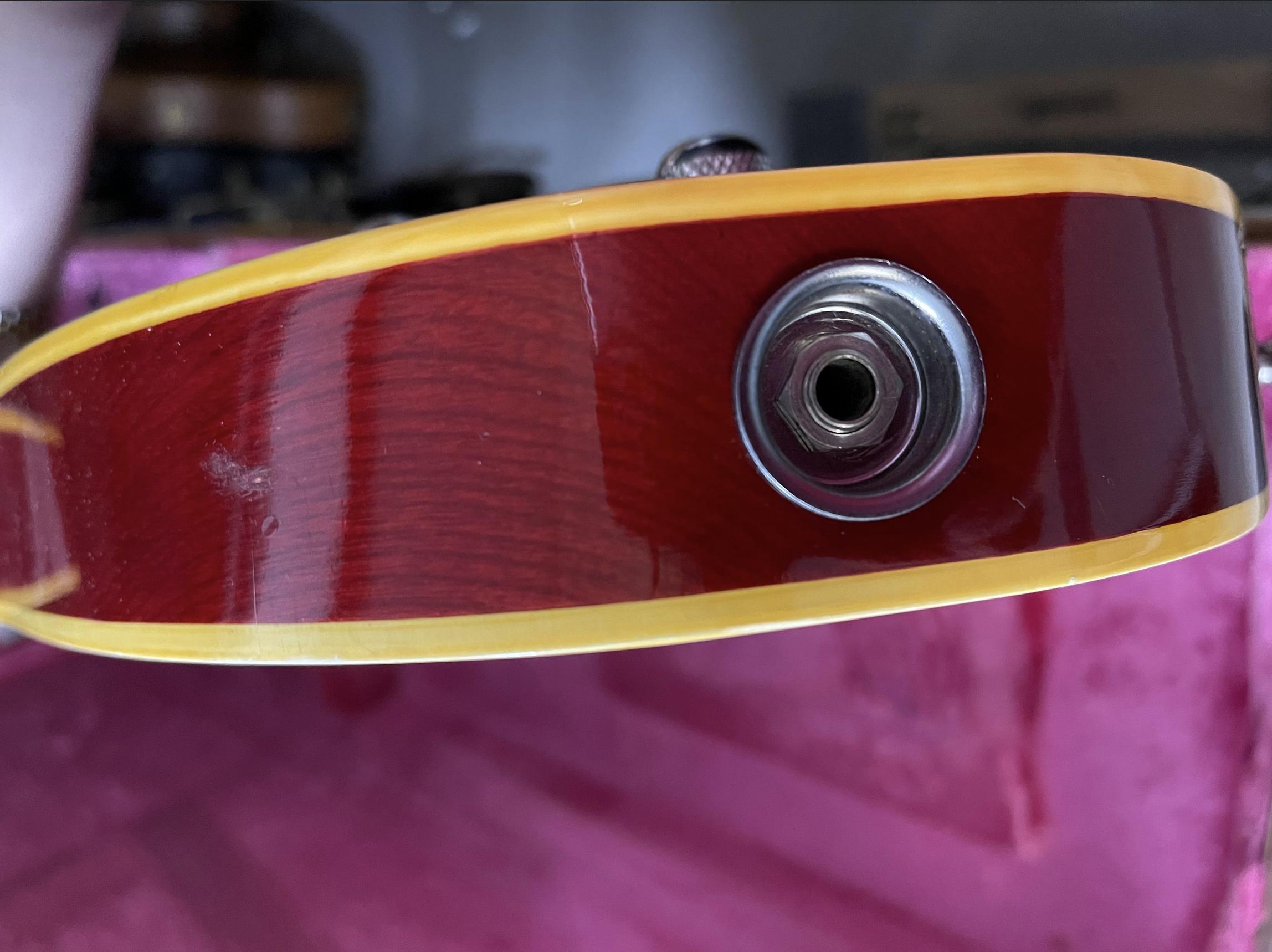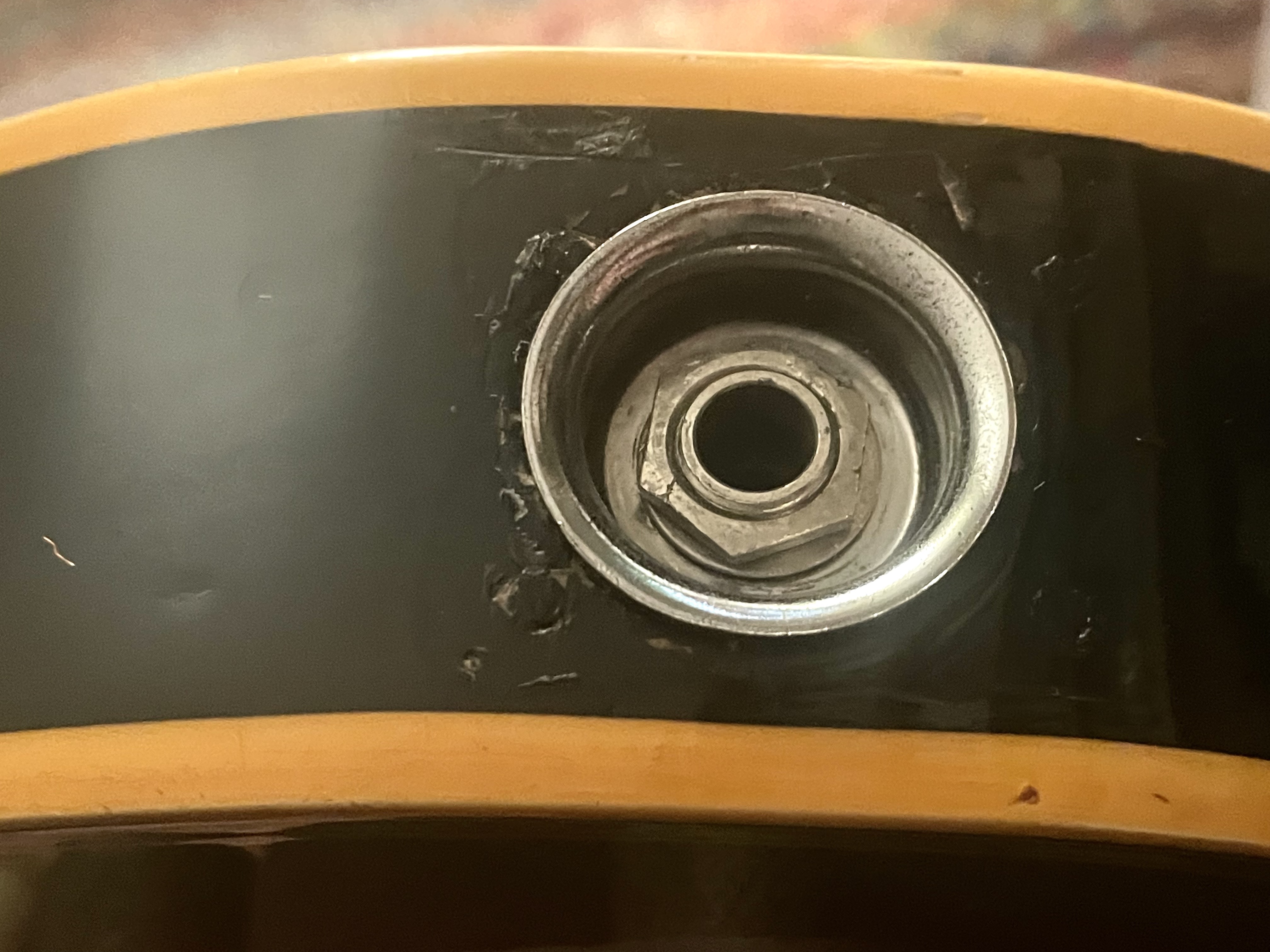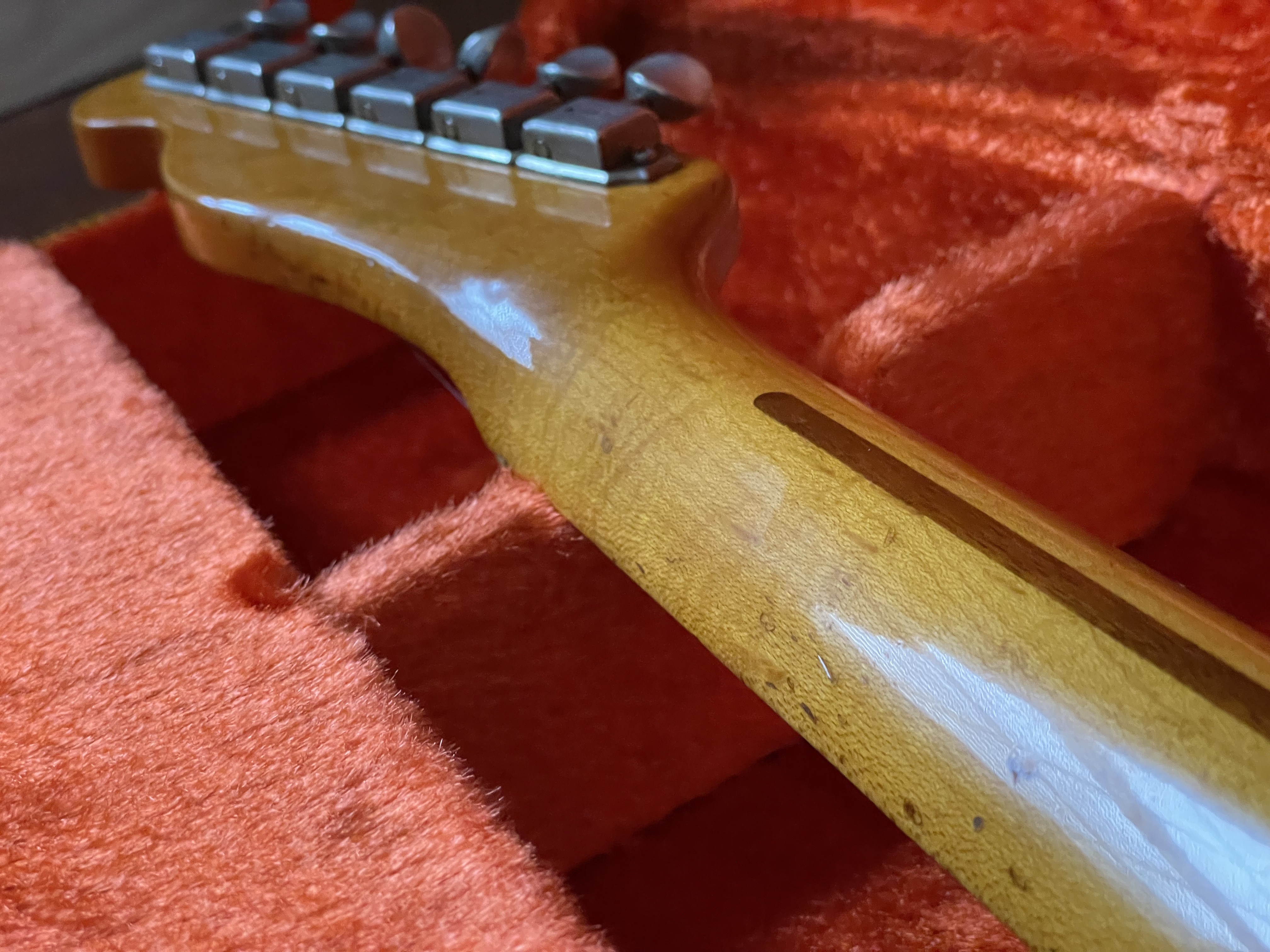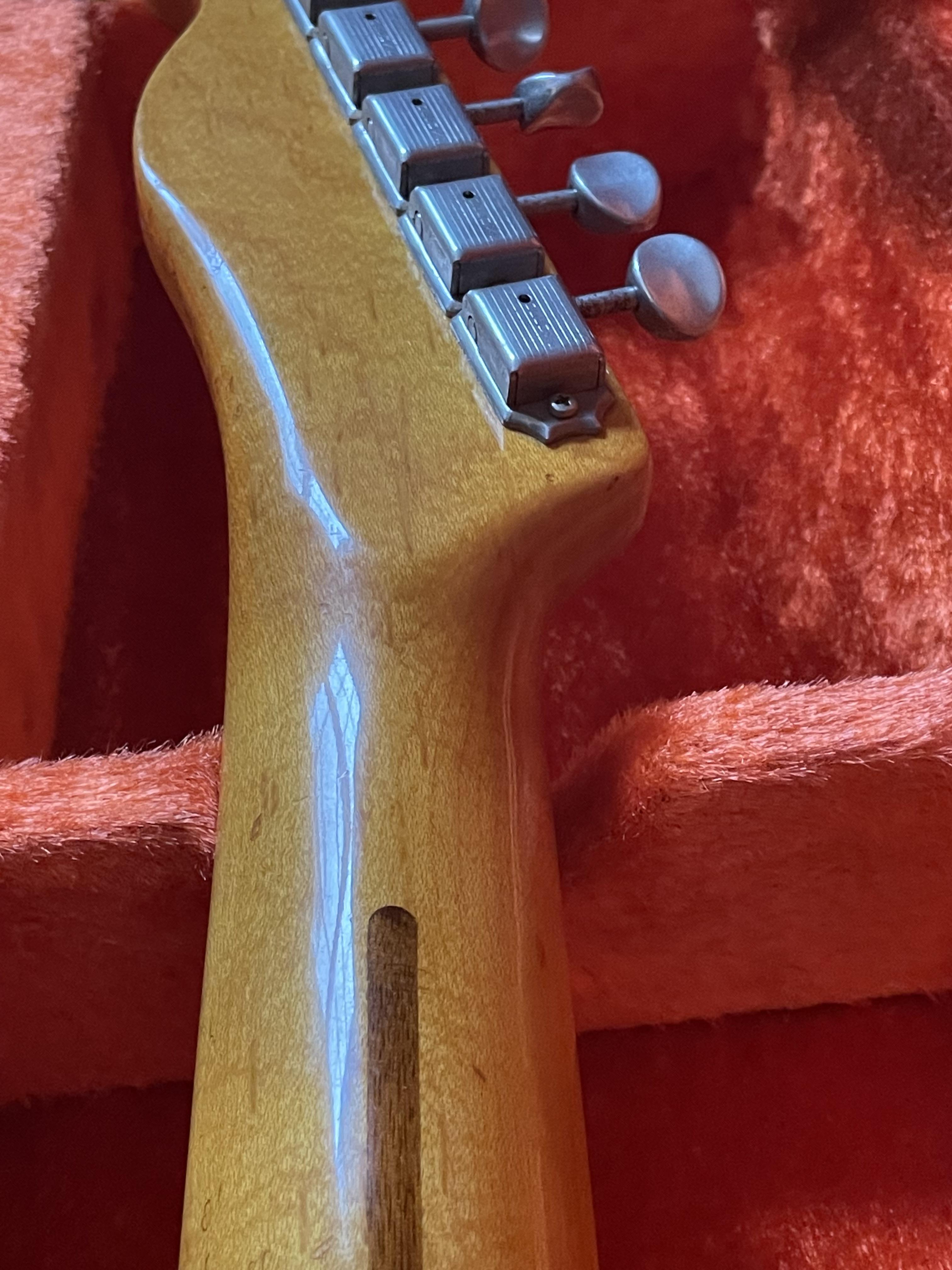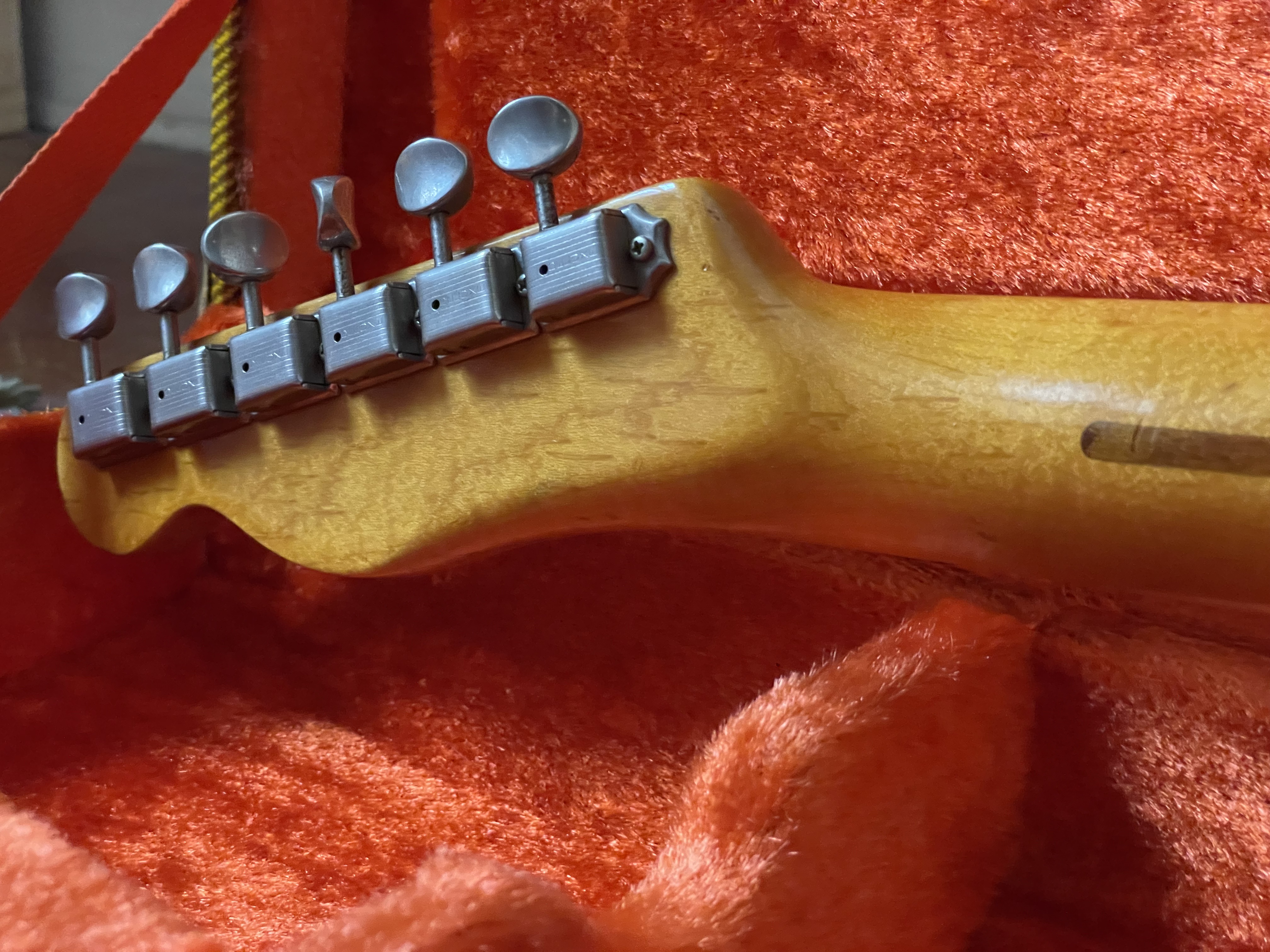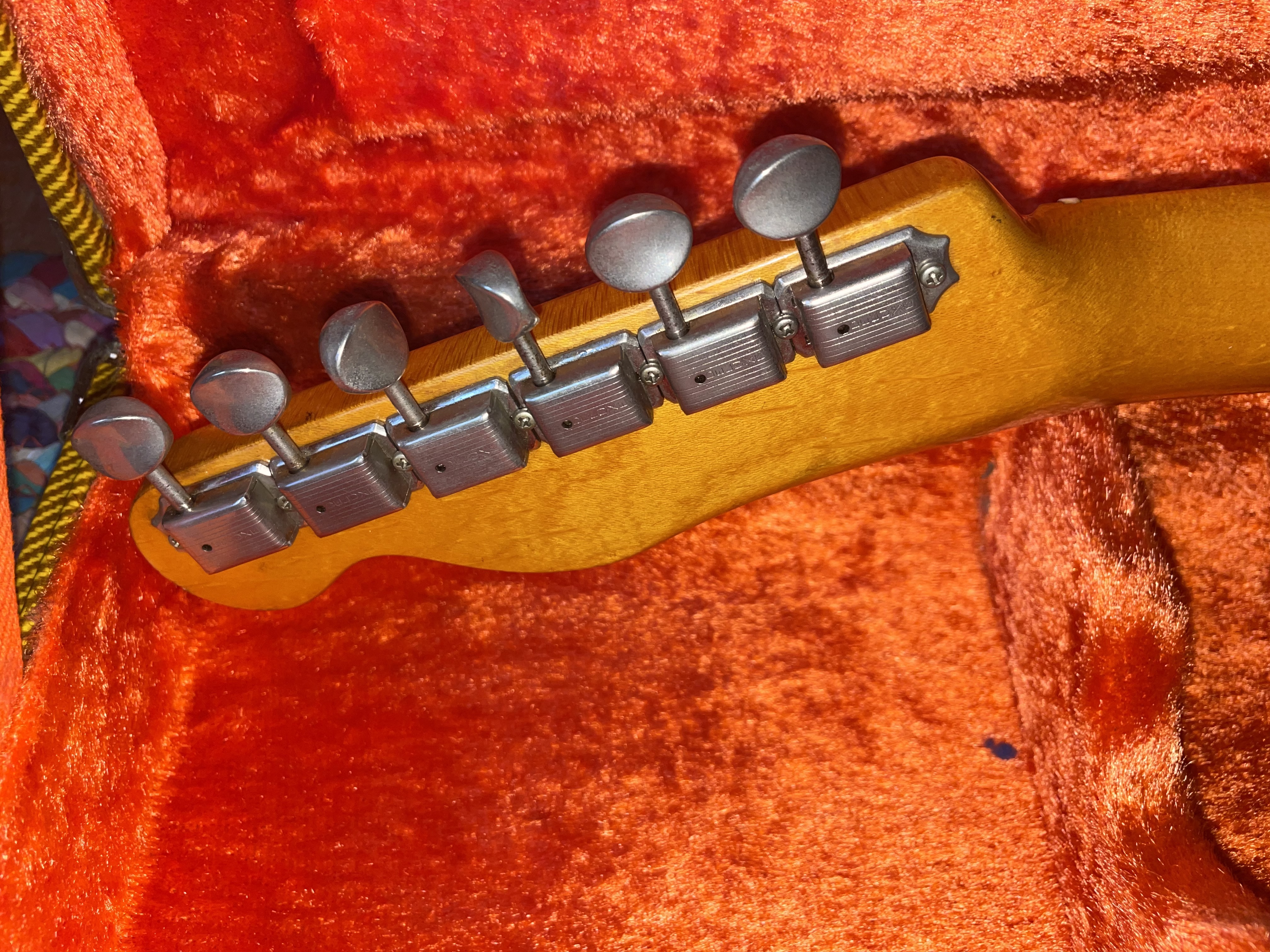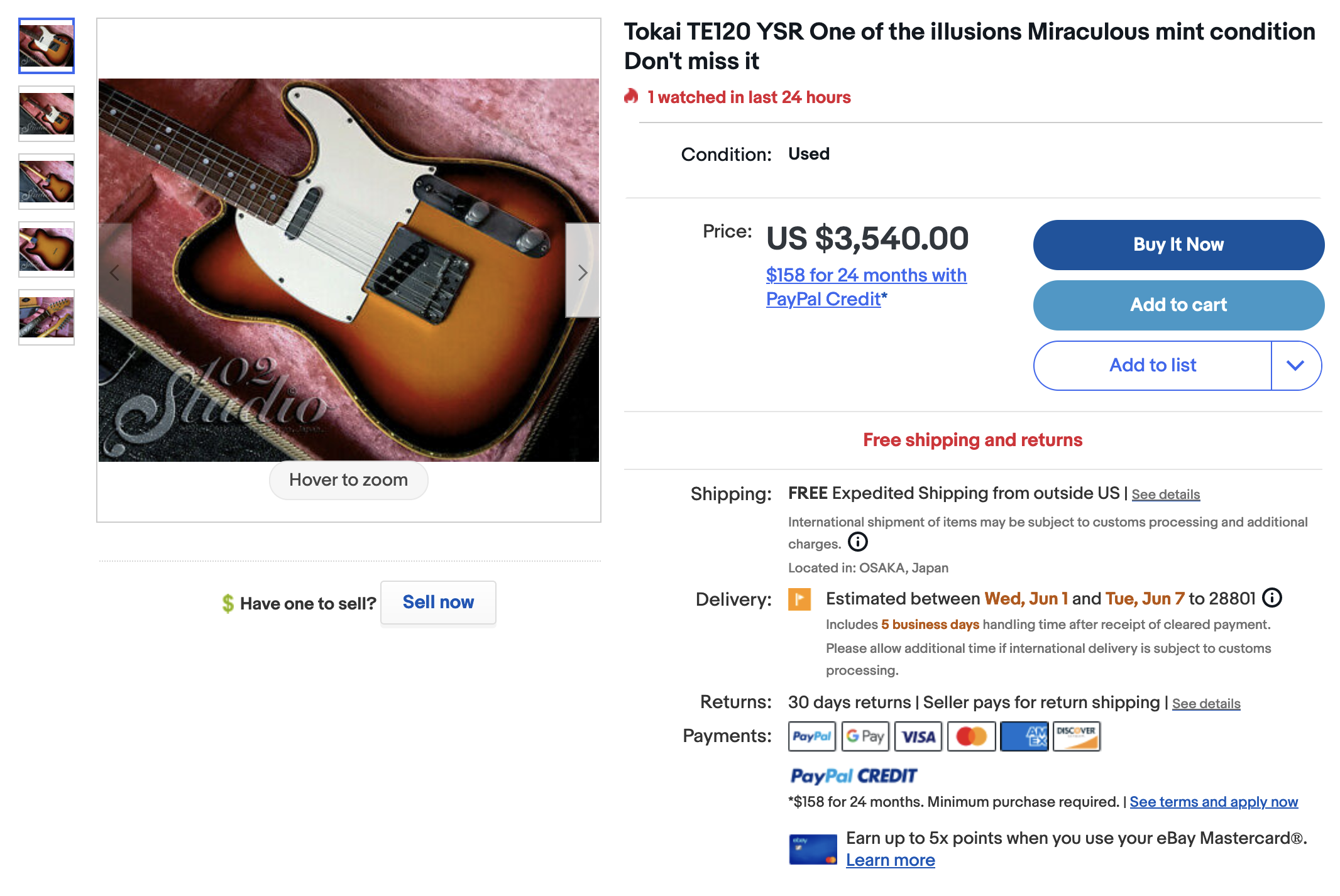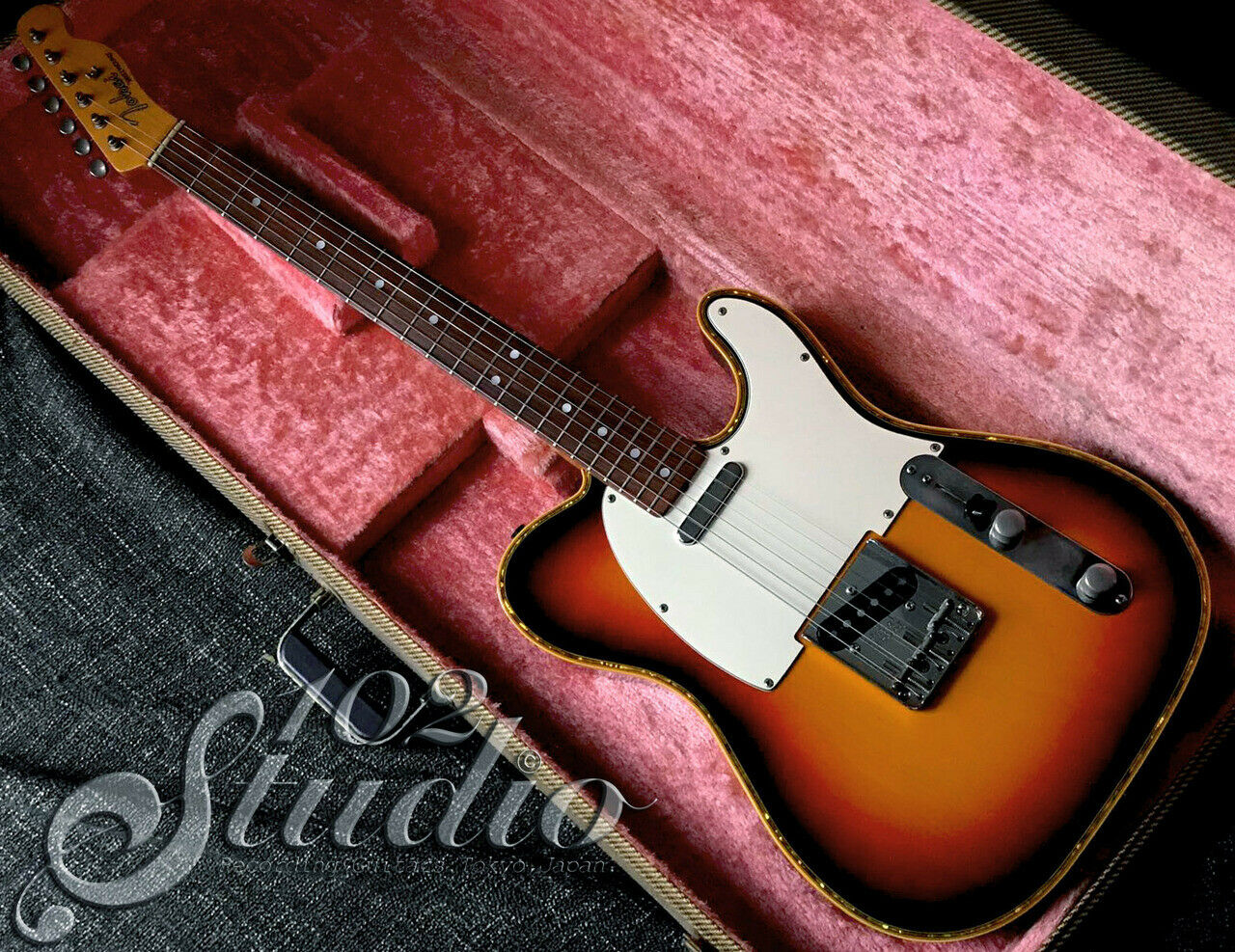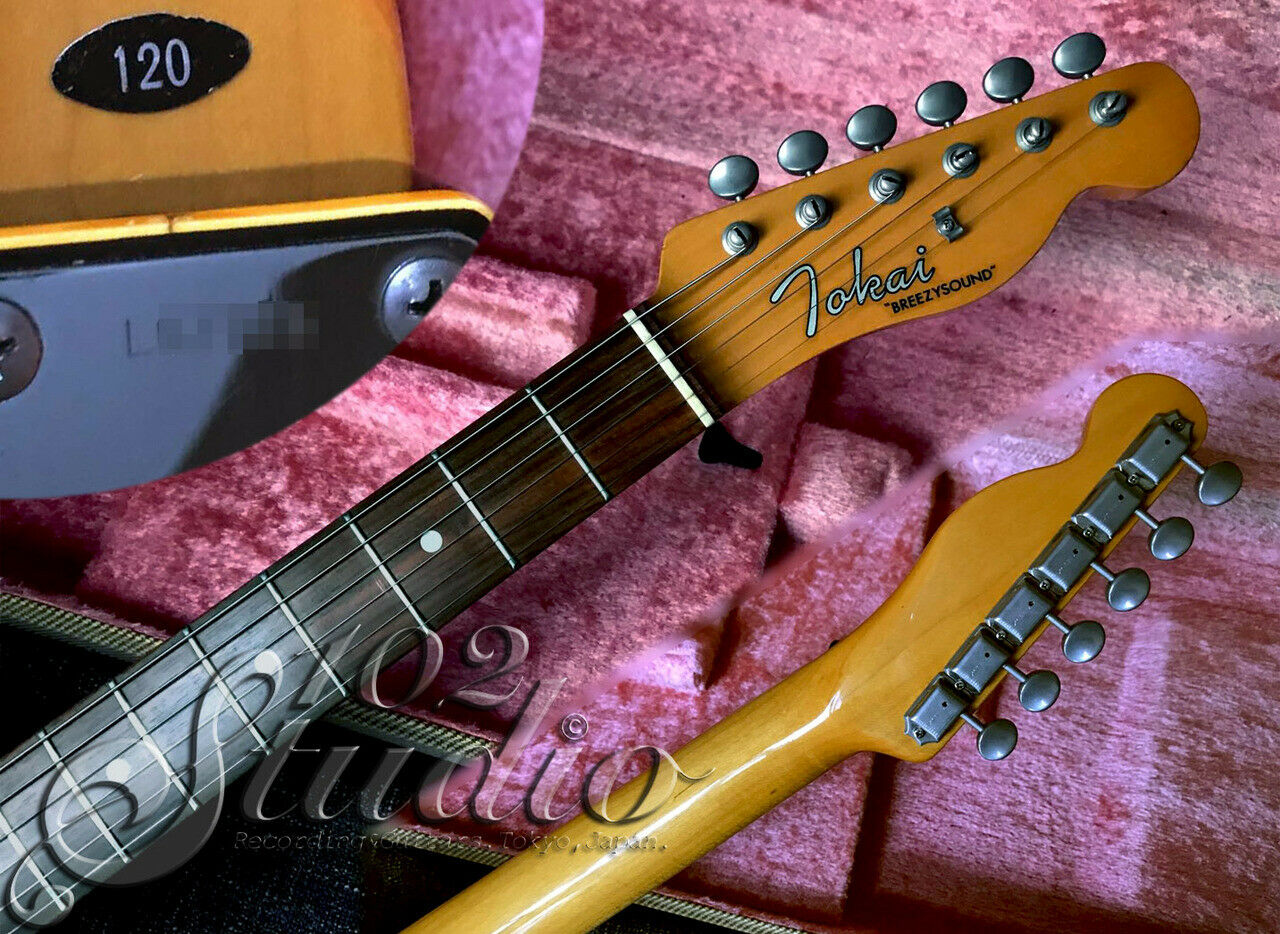After owning this guitar for 8 years I finally opened it up to check on some things, and learned a bit about it.
First, I have no idea what pickups are in there. They are unmarked except for a paper label that fell off with a part number or serial number on it.
Definitely not marked TEA anywhere.
The catalog doesn't help much. Just says "vintage" pickups.
If anyone has a clue as to what these are, please let me know.


One of the pots has a scorch mark.
Guessing that was from when the jack was replaced.

Also, the body is weird in a couple of ways.
First, they apparently used a long drill bit to drill from the neck pocket to the control cavity.
I guess they had to do it this way since it's a one piece body.
Note the hole in the lower left corner of the neck pocket in this picture.
Done before staining.

Also, note the corners of the neck pocket, how they are rounded out and there is a gap.
Shows well in this photo.

And the notch for the truss rod adjustment.
Pickguard not original. Extra holes drilled.

The bright spot is that the numbers match. Hallelujah!
10 = 10


Let me know if anyone knows that the pickups are.




